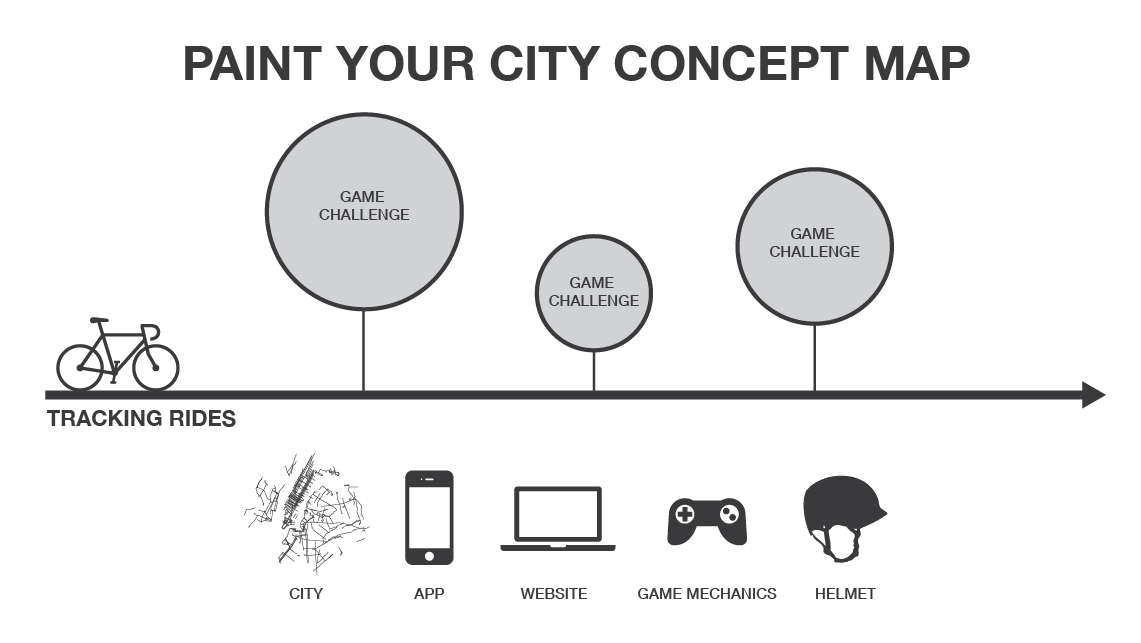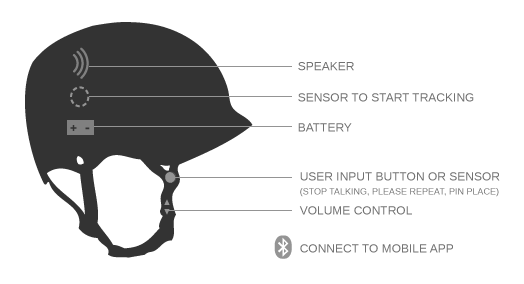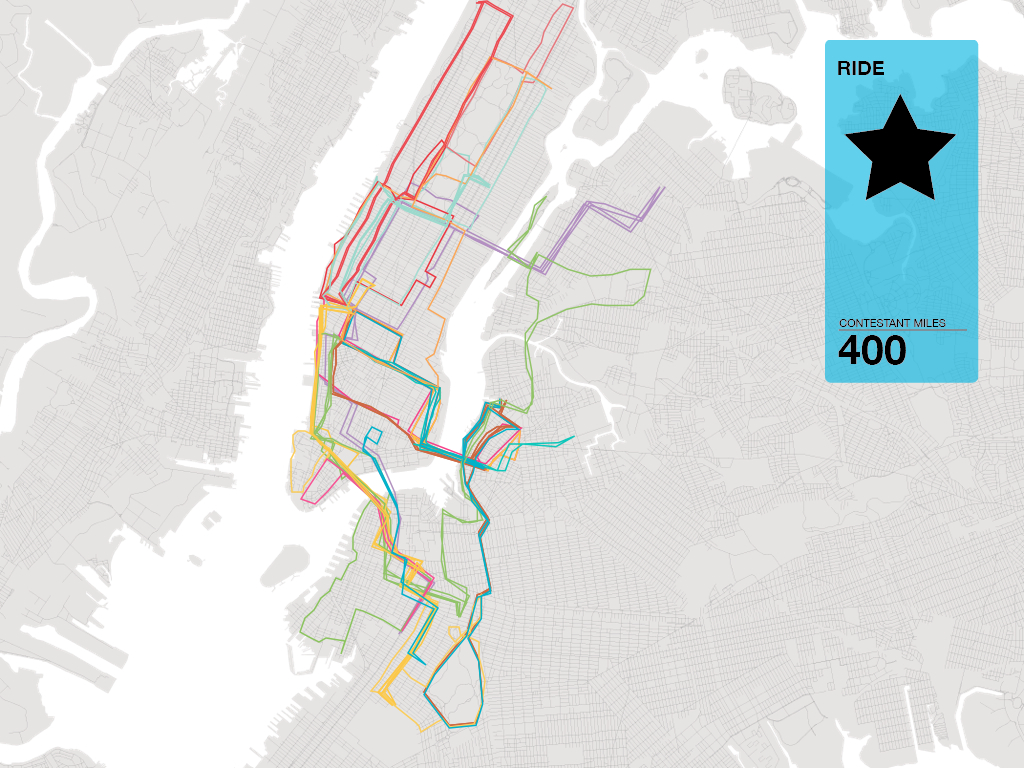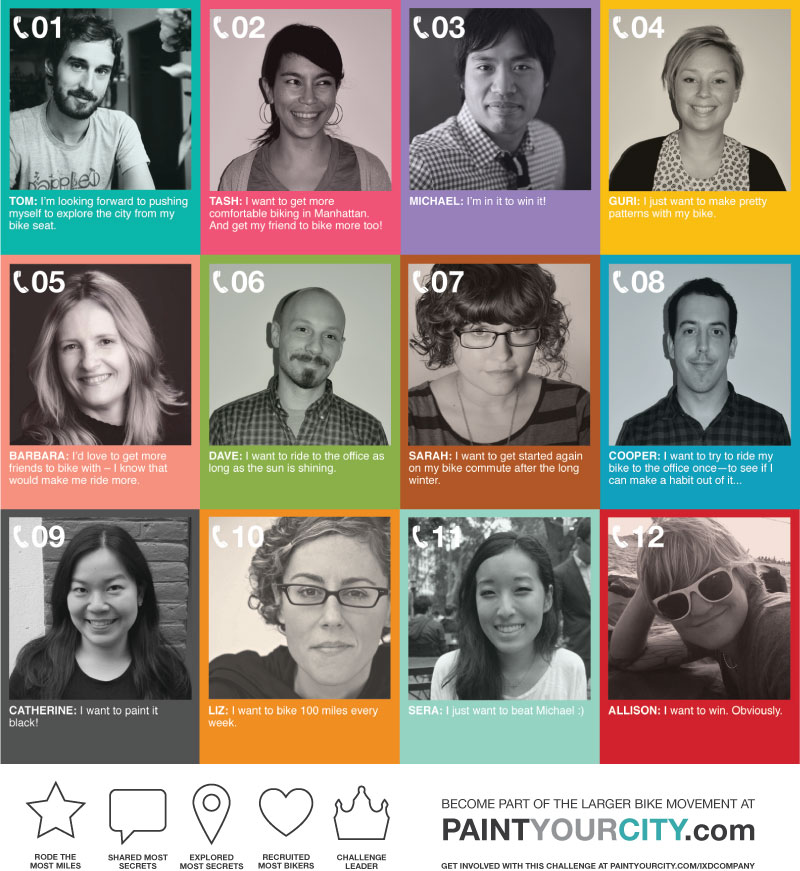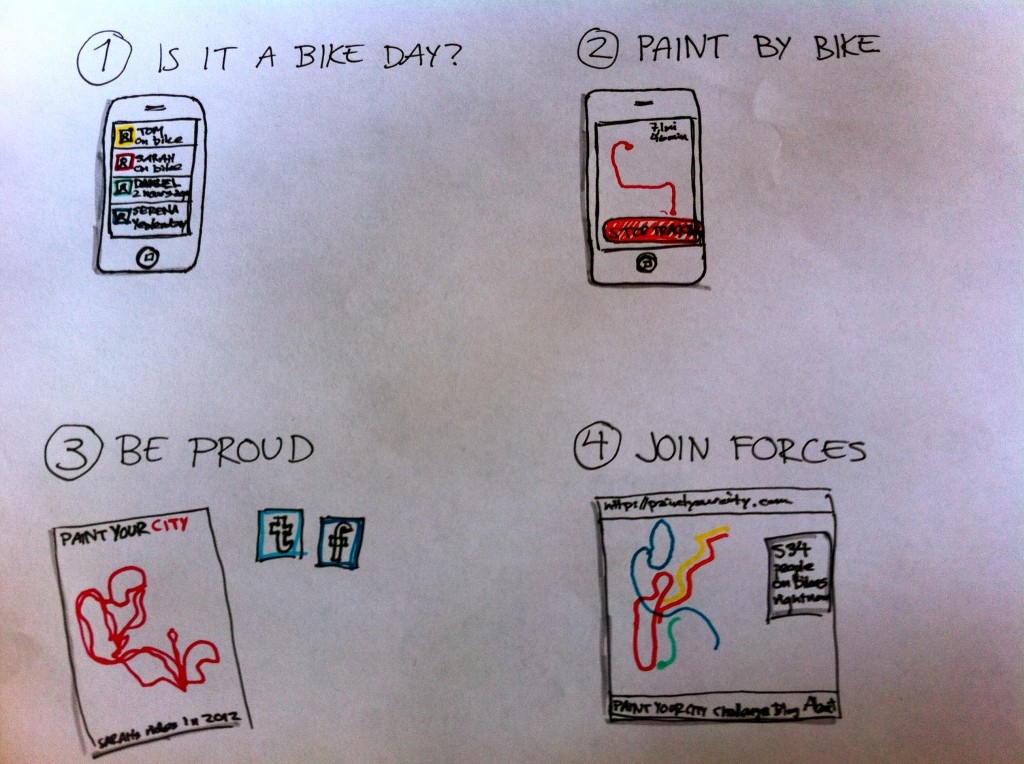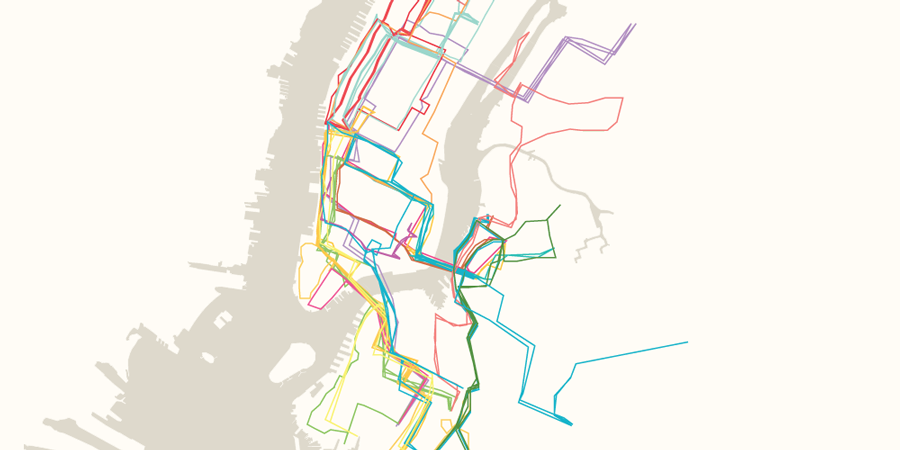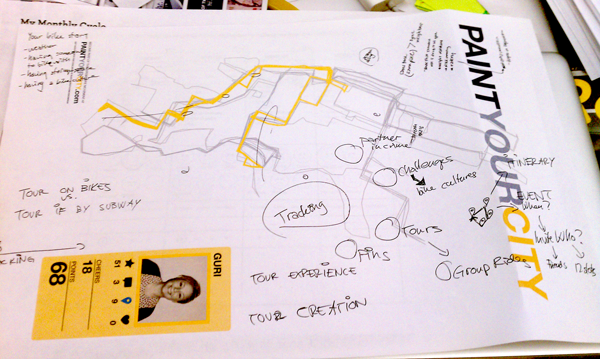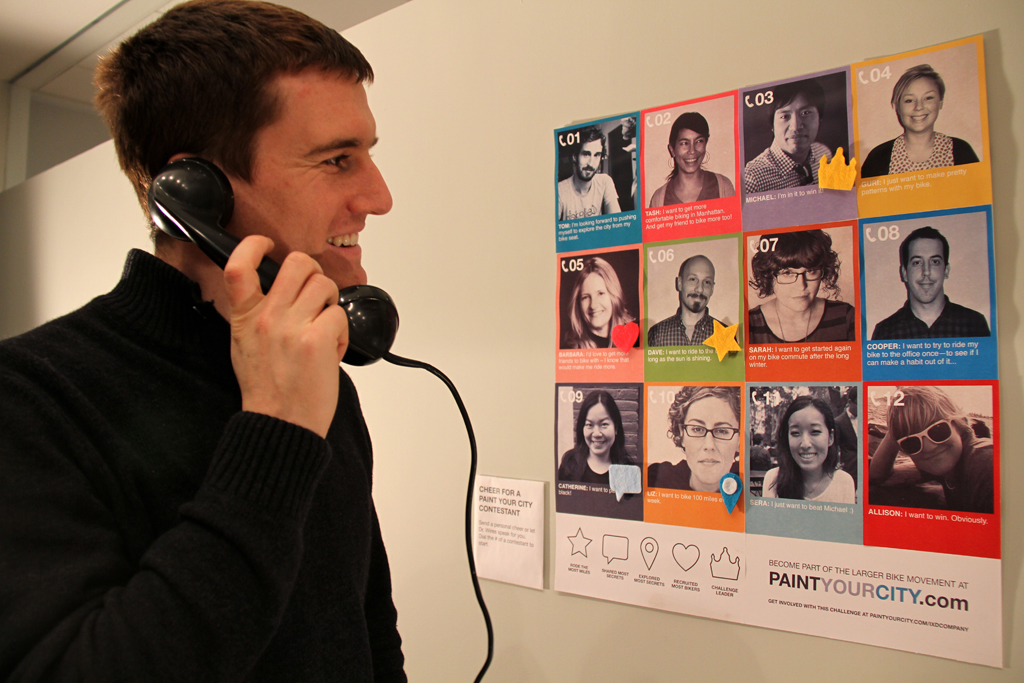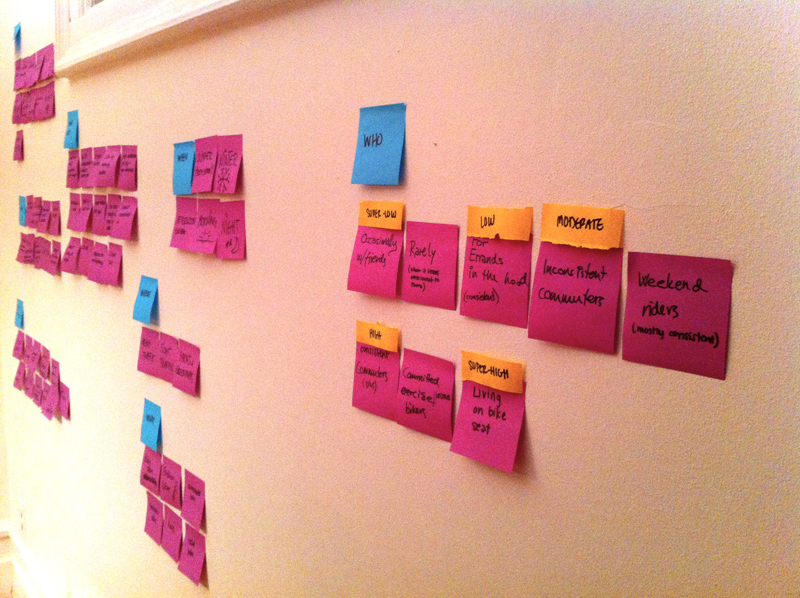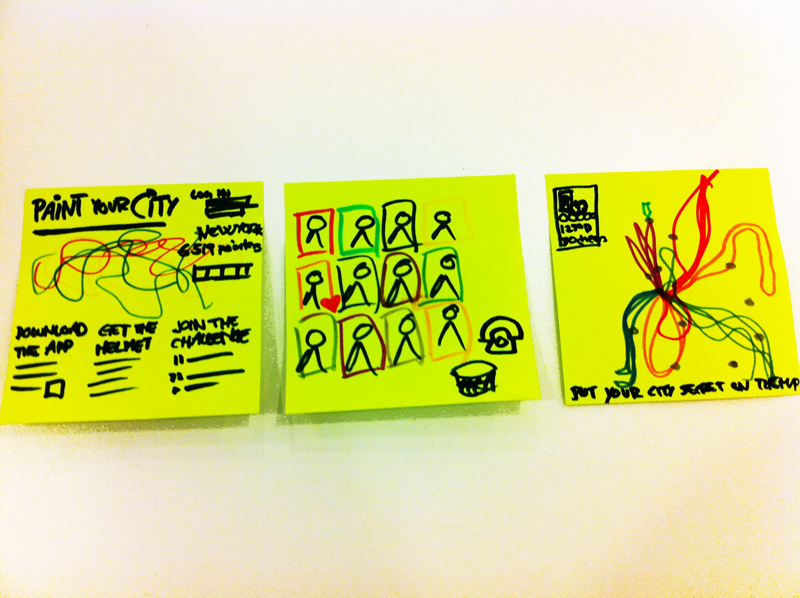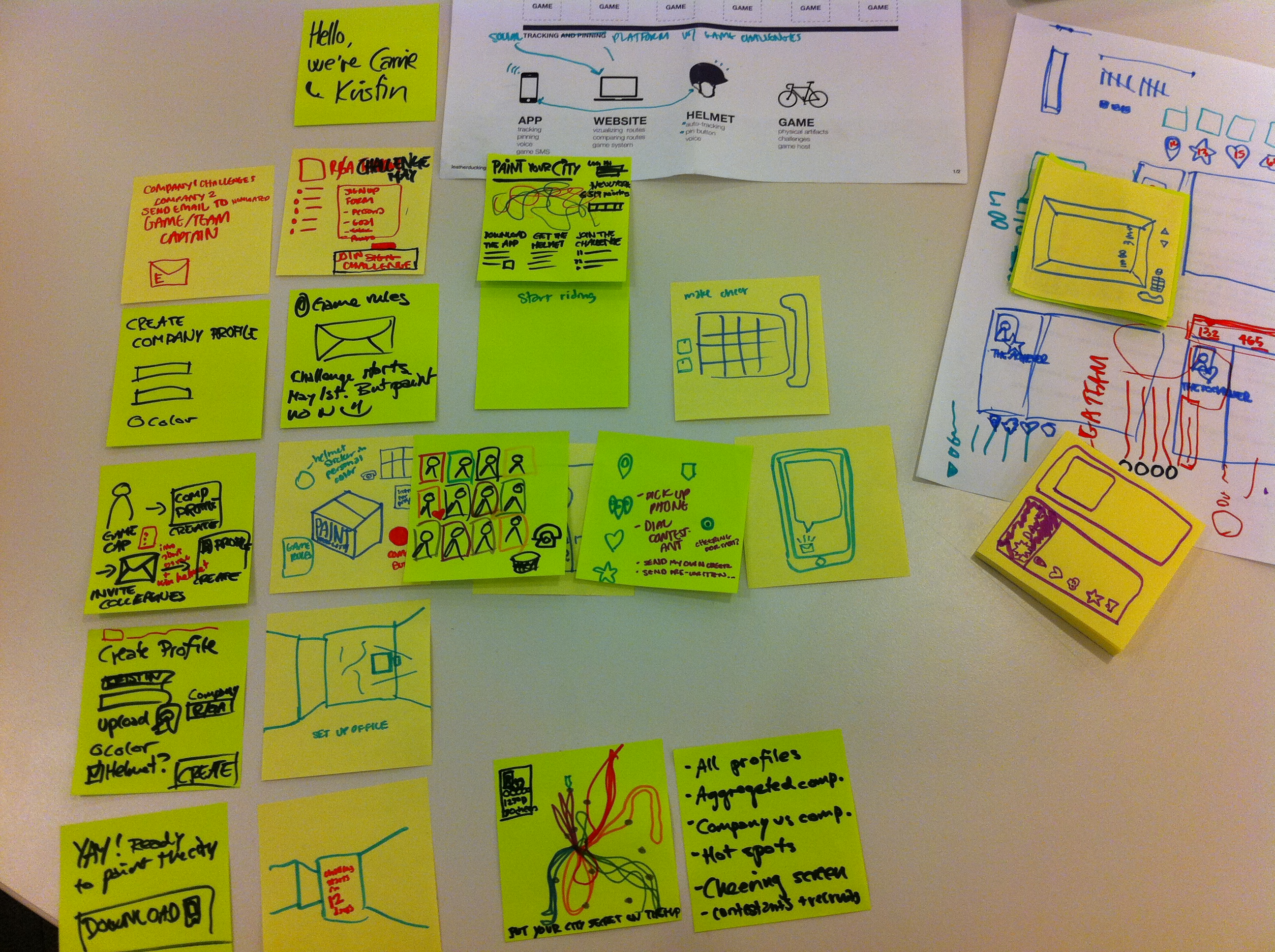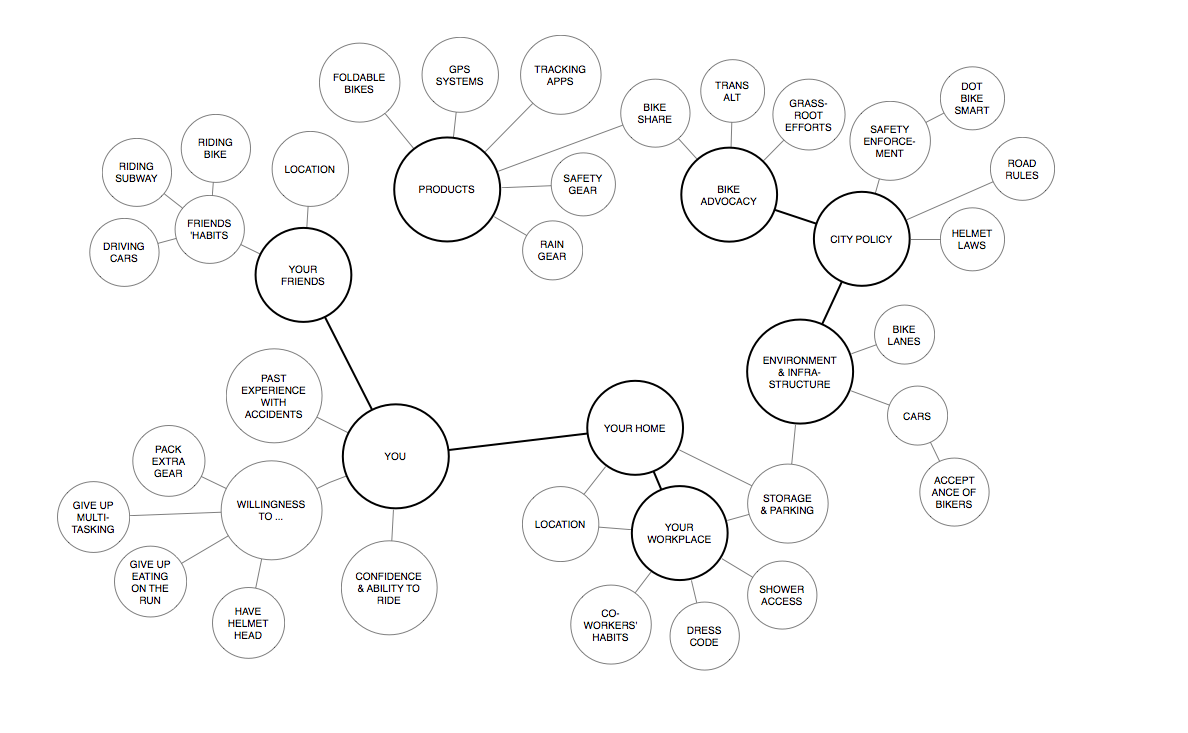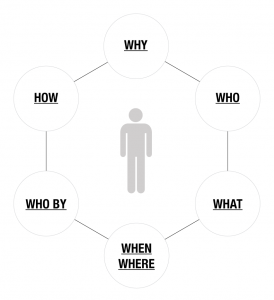STAKEHOLDERS
Who should be in the initial meeting?
The founders: Carrie Stiens and Kristin Breivik.
CTO, CFO, Visual Design Lead
OVERVIEW OF PROJECT
An executive summary of the project goals
The vision for the project overall is to create a social tracking platform with game challenges to motivate people to ride their bikes for transportation. Thesis will be our phase 1. Our goal toward the end of thesis is to get funding for the project so that we can build it.
Phase 1:
Research
Discovery
Design of website, app and physical helmet
Prototyping and Testing
BUSINESS GOALS
How will we make money off of this thing?
The basic features of Paint Your City are free to all users. These include the ability to track, bookmark places and participate in game challenges. Users are able to view their data for the previous month to the current date and can bookmark up to 15 places. Involvement in game challenges is unlimited.
Our primary source of revenue will come through premium subscriptions. The subscription gives users access to their data for the previous 3 years to the current date, allows users to bookmark an unlimited amount of places, and allows users to receive secret tips about the places bookmarked by other users of the platform.
Our secondary source of revenue is through product sales. This includes the helmet, game kits and visualization posters.
AUDIENCE ANALYSIS
Background and key findings from user interviews, personas and scenario, demographics and psychographics
Our audience are New Yorkers with under-utilized bikes. They fall under three categories:
Leisure rider
“I ride my bike around my neighborhood and outside the city, but it’s not really a transportation mode for me”
Our goal for this group is to get people that don’t bike to bike.
Casual commuter
“I ride around my neighborhood and to work occasionally. It’s a secondary mode of transportation.”
“I used to ride my bike, but recently have become lazy about it. I’d like to get into it again.”
Our goal for this group is to get casual riders to ride more and to commute.
Committed commuter
“I ride my bike to work everyday. It’s my primary mode of transportation.”
Our goal for this group is to bikers excited about the in-ride experience and to spread the bike love.
COMPETITIVE RESEARCH
Findings from competitive research, positioning, ways to differentiate
As data tracking will be the core of the platform, there are a lot of products out there with similar features; RunKeeper, Nike+, Jawbone’s UP and FitBit are all collecting data and creating visualizations. Paint Your City will be different as we are more focused on the joy of getting around the city on a bike, than on staying healthy and burning calories. That you burn calories is a nice side effect, but you will use Paint Your City mainly to be a part of a bike movement, to share beautiful visual bike stories through your data tracking, and to discover and share secrets about your city. Cause you don’t bike for exercise – you bike to get around.
Other sources for inspiration: Weight Watchers, tour guides, scavenger hunts, games, Tour de France, Daytum, Yelp, Google Places, sports tournaments, Tamagotchi, Cabspotting, Nokia Vine and Chromaroma. Paint Your City will not have any of these services/products as direct competition, but can definitely look to them to include certain elements (game mechanics, city bookmarking, storytelling through data, motivation, personality).
PROJECT SCOPE
Timeline, budget, milestones
December 2011:
Synthesize research
Concepting one potential game challenge
Winter break:
Deciding on advisors
Read books on motivation, community building, gaming, html/css/javascript
Research ways to build extensive HTML/CSS prototypes
Moodboarding. Gather visual appealing material, tone of voice etc.
January 2012:
Prototyping and qualitative research on bookmarking feature
Testing game mechanics
Wireframing website (information architecture and interaction design)
Wireframing app
Processing explorations(?)
February:
Branding
Visual design
Front-end development
March:
Create video pitch
Kickstarter campaign – so we can build this thing
April:
Create presentation
Practice performance
May:
Present thesis product pitch
POSITIONING STATEMENT
Single statement which clarifies product’s purpose, what it will achieve, for whom and why
Paint Your City is a social tracking platform with game challenges that motivates people to ride their bikes. It’s for city dwellers with under-utilized bikes who have a need to maintain a busy and active lifestyle and get around their city. Unlike tracking apps that are exercise-focused (Runkeeper and NikePlus), our service caters to the unique way that a biker experiences the city. In addition to tracking while riding, bikers can bookmark places and events, unlock secrets from fellow riders, be cheered on by friends, and get directions spoken to them. This narrative is visualized on a city map individually or as part of a bigger bike story.
BRAND ATTRIBUTES
List of personality attributes to guide the creative execution of the product
Playful, colorful, but stylish and minimal. Appeal to designers. The data visualizations and the narratives they are telling are the core of the identity.
CONTENT STRATEGY
Direction for messaging, content elements, tone
Clear, simple language. Playful and positive tone of voice. The content core is people’s routes on the map. However, in any communication with the users, be sure to encourage the users to keep riding.
Focus on the joy of biking:
- the empowering feeling
- the sense of flying
- being in charge of your own time
- being in charge of your own route
- the way biking enables you to be impulsive
- the closeness to the city – stitching the city together
- being outdoors and free
- creating a narrative through painting the city
Do not focus on how your choice impacts the environment.
Do not focus on calories, speed, heart rate, cadence.
FUNCTIONAL REQUIREMENTS
Inventory of proposed features for the product
The proposed features include the following:
Web Platform:
Database to store rider info and data
Ability to compare rides between bikers
- sidebar widget that lets the user choose who they want to compare their rides with
Display aggregated data of neighborhoods and networks
Ability to receive data realtime and communicate who is on the road at any given time
Display bookmarked places on a map with tips about them
- roll-over states for places
Interface to view and compare data
Interface to sign up for game challenges
Interface to buy helmet and posters
App:
GPS tracking
Bluetooth connection to the helmet
Receive commands from a helmet or earphone button
Re-programs button on from earphones to bookmark a place
Integration with Twitter and FB to notify friends when tracking starts
Interface for bookmarked places (ex: bucket list)
Interface to start and stop tracking
Game Challenges and Kits:
Three different levels of game kits available
Multiple challenge offerings (work environment, group of friends, partners)
Bike stardom poster for cheers
Text interface and system to cheer for bikers
Rotary phone installation
- ability to call to send a cheer from a rotary phone
Helmet:
Bluetooth connection to the phone
Button to bookmark places
Sensor to stop and start tracking
Microphone to record voice notes, or make phone calls
Speakers to receive cheers, directions, and tips about places
Posters:
Visualize riders data over time
Ability for rider to choose which data to display
CONCEPT SKETCHES
Rough illustrations of pages, flows, aimed at communicating concepts (not complete designs)
